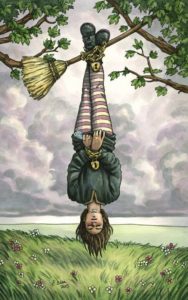When you’re stuck at home, the right writing prompt can transport you.
I’m really lucky! Many of my closest friends are writers. This means that sometimes, when I’m stuck (thanks COVID) and looking for writing prompts at home, a pal will step in and show me another way. That’s the case this week. Usually, I’m quite fond of creating writing prompts. In fact, I consider myself pretty darned good at cooking up dynamic, engaging exercises that take writers (me included) into new territory.
This week, though? I’m freakin’ dry. And just when I want to offer you guys something fresh to while away the l-o-n-g, isolated hours—or, even better, give you a head’s start on a new writing project. Which brings us to my gratitude for writer friends in general—and Teri AnpoWi Saveliff in particular.
When I was sighing to Teri about my dearth of creative spark, she offered up her services. “I’ve been challenging myself with a bunch of different writing prompts,” she told me. “I’d be happy to share a few with your readers!” Now, that is team spirit, people! Team SPIRIT!
So, without further ado, I offer you …
Teri’s quarantine-easing writing prompts at home
I suspect I’m not the only writer who, now involuntarily hunkered down in place with hours of unforeseen free time, has not been able to pick up the pen and finally finish that long-neglected novel. In fact, I have become far less productive than usual. One time-honored solution is to take on a smaller, less daunting project with an eye to shaking out your hands and getting the juices flowing again.
Without the outside world to inspire me, I have tried to look at the objects in my home with new eyes. I shared my approach with Jamie, whose enthusiasm made me think these prompts might catch your fancy, as well. Try these writing prompts at home:
1) The Previously Undetected Voice in the Room
I have several beautiful statues of goddesses adorning my altar. Lakshmi, the Hindu goddess of prosperity and good fortune, has, depending upon her manifestation, two, four, or eight arms. She usually holds lotus flowers and fruit in some of her hands; others are open, offering blessings.
What if she were to choose to come alive, right now? What would she say? What questions would she ask? What might she cause to happen in my house? Or would she ignore me altogether, cavorting with my figurine of the Vetruvian man?
Perhaps you have no three-dimensional art in your home to galvanize your imagination. But perhaps you do have a watercolor of an aging barn. What if the barn could speak? What if it had witnessed a crime, or two young lovers’ first kiss? What if it wanted to divulge its history before gravity triumphs over its rotting wood and rusting nails?
Pick any piece of art in your house and give it a voice. Let it tell you what it’s seen, what it imagines, what it longs for. If possible, give it a happy ending.
2) A Pen with a Story
Find the oldest pen among your writing implements, one you didn’t acquire new. More likely than not, it’s a nondescript ballpoint, perhaps pocketed by mistake when you signed a credit slip at that antique store you visited six years ago. This pen had a history before it came into your possession. Who owned it? What does the pen know of this person? Did they use the pen to write frivolous checks? Compose love sonnets? Craft a Dear John letter? Let the pen tell you as it slips across the page.
3) Living Upside Down
Many tarot readers say they feel we are living in Hanged Man times. No, not strangling in a noose—suspended upside down. It is a time for waiting, reflection, and looking at things from a different perspective.
When I was a child, oh, how we reveled in our days of idleness! I would lie on the carpet, looking up at the ceiling, and imagine that it was the floor. I pictured myself stepping over raised thresholds that separated room from room. I saw a space where light fixtures were planted into the floor, illuminating the rooms with a far different quality. I wondered how it would feel to walk across floors of popcorn (thank goodness popcorn ceilings are no longer in vogue!).
What does your space look like upside down. How would you move through it? What looks different? What is still familiar? Does gazing at it up-ended give you vertigo? Does your view suggest white rabbits with pocket watches ready to dive into Wonderland? What adventure beckons you into your inverted world?
Have fun with these writing prompts at home and stay safe.
Writing coach
Need help with your book? I’m available for book coaching and manuscript review! And check out “Should I Hire a Writing Coach” in THE WRITER magazine.
* * *
Thanks so much to Teri AnpoWi Saveliff for sharing her inspiring prompts with us. If you like these, you might enjoy her ideas about using tarot to help you plot your novel and develop your characters. She’s also the author of the charming novel SIGNATURES.
Thank you to Llewellyn Worldwide for kind permission to use the image of The Hanged Man from the EVERYDAY WITCH TAROT.














